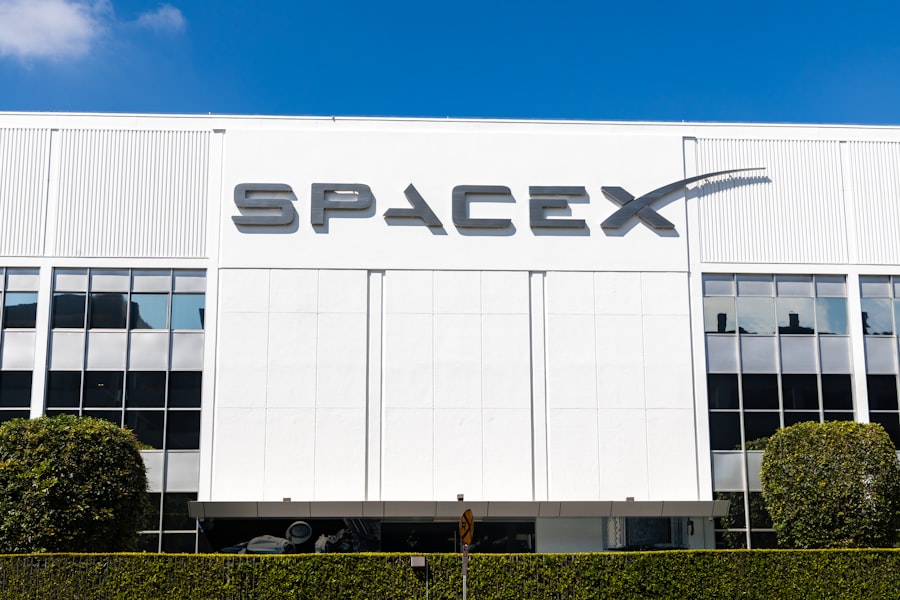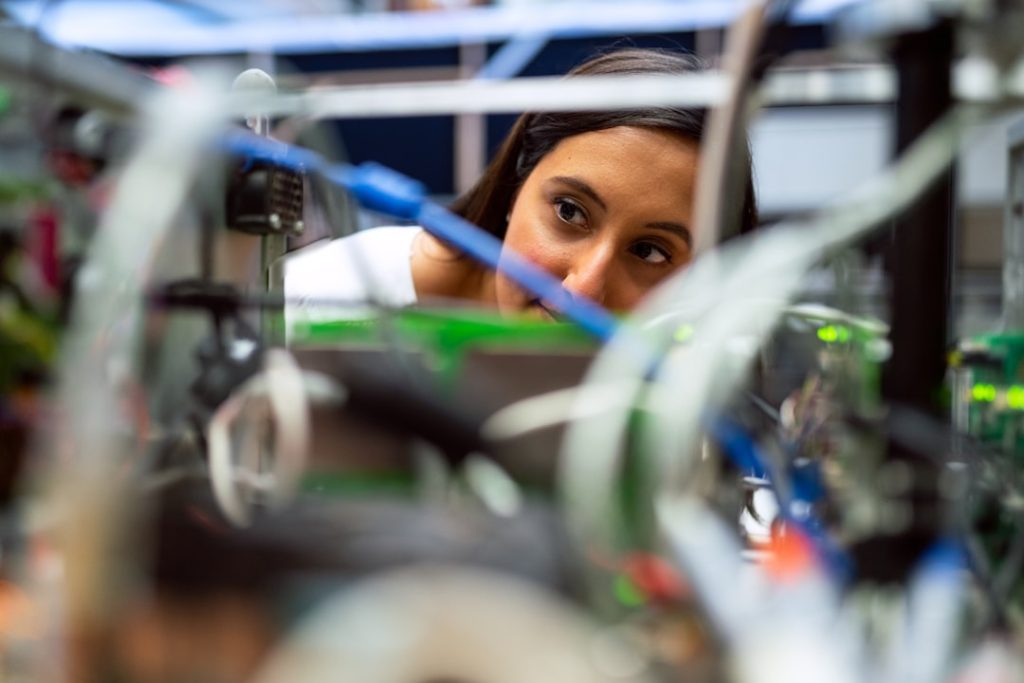The journey of space engineering is a remarkable narrative that intertwines human curiosity, technological innovation, and the relentless pursuit of knowledge. The roots of space engineering can be traced back to ancient civilizations, where early astronomers meticulously observed celestial bodies and theorized about their movements. However, it was not until the mid-20th century that space engineering began to take a more structured form.
The launch of Sputnik 1 by the Soviet Union in 1957 marked a pivotal moment in this evolution, igniting the space race and prompting nations to invest heavily in aerospace technology. This event not only demonstrated the feasibility of sending objects into orbit but also laid the groundwork for future advancements in satellite technology, communication, and scientific research. As the space race progressed, significant milestones were achieved that showcased the rapid evolution of engineering capabilities.
The United States’ Apollo program, culminating in the historic moon landing of Apollo 11 in 1969, exemplified the extraordinary feats that could be accomplished through collaborative efforts in engineering and science. The development of powerful rockets, such as the Saturn V, and the intricate design of spacecraft capable of supporting human life in the harsh environment of space were monumental achievements. These early missions not only expanded our understanding of space but also fostered a culture of innovation that would continue to drive advancements in space engineering for decades to come.
Key Takeaways
- Space engineering has evolved significantly over time, from the early days of rocketry to the development of advanced spacecraft and exploration missions.
- Cutting-edge technologies such as reusable rockets, ion propulsion, and 3D printing are revolutionizing space exploration and making it more cost-effective and efficient.
- Artificial intelligence plays a crucial role in space engineering, from autonomous spacecraft navigation to data analysis and decision-making in real time.
- Advancements in space propulsion systems, including electric and plasma propulsion, are enabling faster and more efficient travel through space.
- Sustainable space habitats are essential for the future of space colonization, with research focusing on closed-loop life support systems and resource utilization.
Cutting-Edge Technologies in Space Exploration
In recent years, space exploration has witnessed an unprecedented surge in technological advancements that have transformed our approach to understanding the cosmos. One of the most significant developments is the advent of reusable rocket technology, pioneered by companies like SpaceX. The Falcon 9 rocket, designed to return safely to Earth after delivering payloads to orbit, has drastically reduced the cost of launching satellites and other cargo into space.
This innovation not only makes space more accessible but also paves the way for more ambitious missions, including crewed flights to Mars and beyond. Another groundbreaking technology is the deployment of advanced satellite systems equipped with high-resolution imaging capabilities. These satellites are instrumental in various applications, from climate monitoring to disaster response.
For instance, NASA’s Landsat program has provided invaluable data for over four decades, enabling scientists to track changes in land use and environmental conditions. Furthermore, the integration of miniaturized satellites, or CubeSats, has democratized access to space for universities and research institutions, allowing them to conduct experiments and gather data without the prohibitive costs associated with traditional satellite launches.
The Role of Artificial Intelligence in Space Engineering

Artificial intelligence (AI) is increasingly becoming a cornerstone of modern space engineering, enhancing our ability to analyze vast amounts of data and make informed decisions in real-time. One notable application is in autonomous navigation systems for spacecraft. Missions such as NASA’s Mars rovers utilize AI algorithms to navigate complex terrains without direct human intervention.
This capability is crucial for exploring distant planets where communication delays can hinder remote control operations. By employing machine learning techniques, these rovers can adapt to their surroundings, identify obstacles, and optimize their paths, significantly increasing mission efficiency. Moreover, AI plays a vital role in data analysis and interpretation.
The sheer volume of data generated by telescopes and space missions can be overwhelming; however, AI algorithms can sift through this information to identify patterns and anomalies that may elude human researchers. For example, the Kepler Space Telescope utilized machine learning to discover thousands of exoplanets by analyzing light curves from distant stars. This synergy between AI and space exploration not only accelerates scientific discovery but also opens new avenues for understanding the universe.
Advancements in Space Propulsion Systems
| Space Propulsion System | Advancement |
|---|---|
| Chemical Propulsion | Efficiency improvements with new fuel combinations |
| Electric Propulsion | Higher thrust and specific impulse with ion and plasma engines |
| Nuclear Propulsion | Potential for faster and more efficient deep space travel |
| Solar Sail | Advancements in lightweight and durable materials for larger sails |
The field of propulsion systems has seen remarkable advancements that promise to revolutionize how we explore space. Traditional chemical propulsion systems have served humanity well for decades; however, they are limited by their fuel efficiency and thrust capabilities. In contrast, electric propulsion systems, such as ion thrusters, offer a more efficient alternative for long-duration missions.
These systems utilize electric fields to accelerate ions, providing a continuous thrust that can significantly reduce travel time to distant destinations like Mars or asteroids. One of the most exciting developments in propulsion technology is the concept of nuclear thermal propulsion (NTP). NTP systems use nuclear reactions to heat a propellant, resulting in higher efficiency compared to conventional chemical rockets.
This technology could enable crewed missions to Mars within a matter of months rather than years, making interplanetary travel more feasible. Additionally, research into solar sails—which harness the pressure of sunlight for propulsion—has gained traction as a potential method for deep-space exploration. These advancements not only enhance our capabilities but also inspire new mission concepts that were previously deemed impractical.
Sustainable Space Habitats: The Future of Space Colonization
As humanity sets its sights on long-term habitation beyond Earth, the development of sustainable space habitats has become a critical focus within space engineering. The International Space Station (ISS) serves as a prototype for future habitats, demonstrating how humans can live and work in microgravity for extended periods. However, as we look toward colonizing other celestial bodies like Mars or the Moon, engineers are tasked with designing habitats that can support life sustainably.
One promising approach involves utilizing local resources through in-situ resource utilization (ISRU). For instance, extracting water from lunar ice or Martian soil could provide essential resources for drinking water and oxygen production. Additionally, advanced life support systems that recycle air and water will be crucial for reducing reliance on supplies from Earth.
Concepts like the Mars Society’s Mars Base Camp envision habitats that integrate agricultural systems capable of growing food in controlled environments, ensuring a self-sustaining presence on other planets.
The Importance of Robotics in Space Engineering

Robotics has become an indispensable component of space engineering, enabling missions that would be impossible or too dangerous for humans. Robotic spacecraft have been instrumental in exploring distant planets and moons within our solar system. For example, NASA’s Voyager probes have traveled beyond the outer planets, providing invaluable data about our solar system’s boundaries and interstellar space.
These robotic explorers have captured stunning images and gathered scientific data that have expanded our understanding of planetary science. In addition to exploration missions, robotics plays a crucial role in satellite servicing and maintenance. The ability to repair or upgrade satellites in orbit can extend their operational lifetimes and reduce space debris.
NASA’s Restore-L mission aims to demonstrate autonomous satellite servicing capabilities using robotic arms to refuel satellites in low Earth orbit. This innovation not only enhances satellite longevity but also opens up new possibilities for future missions that require on-orbit assembly or repairs.
Space Mining: Exploiting Resources Beyond Earth
The concept of space mining is rapidly gaining traction as humanity seeks to exploit resources beyond our planet. Asteroids are particularly appealing targets due to their rich deposits of metals and minerals that could be used for construction or manufacturing in space. Companies like Planetary Resources and Deep Space Industries have emerged with ambitious plans to mine asteroids for precious metals such as platinum and gold.
The potential benefits of space mining extend beyond resource extraction; they could also alleviate some of the pressures on Earth’s dwindling resources. For instance, mining asteroids could provide materials for building infrastructure on Mars or even support large-scale solar power generation in space. However, this endeavor is fraught with challenges, including legal and ethical considerations regarding ownership rights in outer space.
As international treaties evolve to address these issues, the future of space mining will likely hinge on collaboration between governments and private enterprises.
Challenges and Opportunities in Space Engineering: Looking Ahead
While the future of space engineering is filled with promise, it is not without its challenges. One significant hurdle is the high cost associated with launching missions into space. Despite advancements in reusable rocket technology, funding remains a critical issue for many organizations seeking to explore beyond Earth’s orbit.
Governments and private companies must find innovative financing models that can support ambitious projects while ensuring sustainability. Moreover, as we venture further into space, concerns about safety and environmental impact become increasingly important. The potential for space debris poses risks not only to operational satellites but also to future missions carrying human crews.
Developing effective strategies for debris mitigation and management will be essential as we expand our presence beyond Earth. Despite these challenges, the opportunities presented by advancements in space engineering are immense. The potential for scientific discovery is unparalleled; each mission has the capacity to unveil new knowledge about our universe and our place within it.
As we continue to push the boundaries of what is possible through engineering innovation, humanity stands on the brink of a new era in exploration—one that may redefine our understanding of life beyond Earth and our responsibilities as stewards of both our planet and those we seek to explore.


